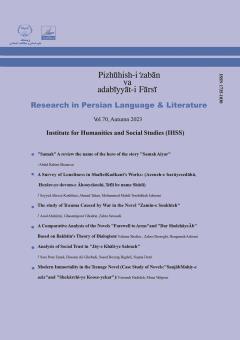In the Holy Quran the story life of several prophets is elaborated through a story. One of these stories speaks of Joseph's life. Joseph’s Sura has a hundred and eleven verses. The first three verses and also the last ten verses are non-fictional, while the other verses
More
In the Holy Quran the story life of several prophets is elaborated through a story. One of these stories speaks of Joseph's life. Joseph’s Sura has a hundred and eleven verses. The first three verses and also the last ten verses are non-fictional, while the other verses cover the entire story without any the non-fictional verses interrupting. Quran's purpose is not to tell a story, but this Sura possesses many of the common and known aspects of the fictional elements recognized in fiction. This article intends to study and survey the plenitude of the fictional elements in this story.
The present article is both descriptive and analytic; through which it discusses and analyzes the fictional elements such as point of view, plot, structure, the idea (including theme and subject), conflict, character, characterization, dialogue, time and place setting as well as the atmosphere in a story.
The story of Joseph is the only story in the Holy Quran which is atually told from the beginning to the end in one Sura. In this Sura, through utilizing the modern techniques of fiction, the religious culture, education, teaching, guidance and men's learning lessons are all introduced, in addition to indicating the lofty purposes of the Holy Quran in the form of a story. In this story the elements of fiction are structured in a way that the reader feels as if he himself is present in the story just like one of the characters.
Manuscript profile


